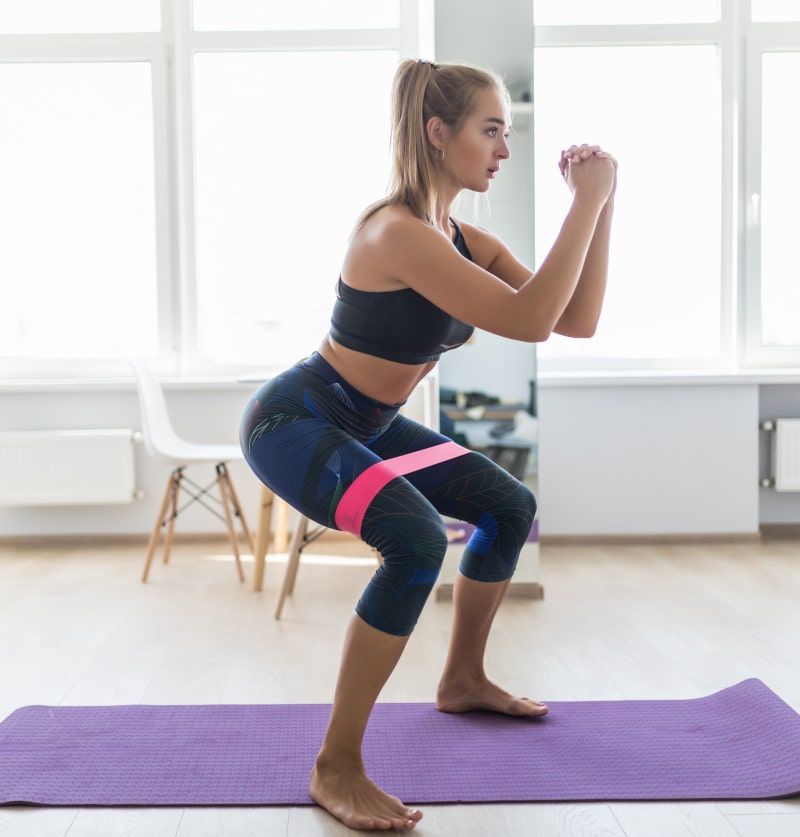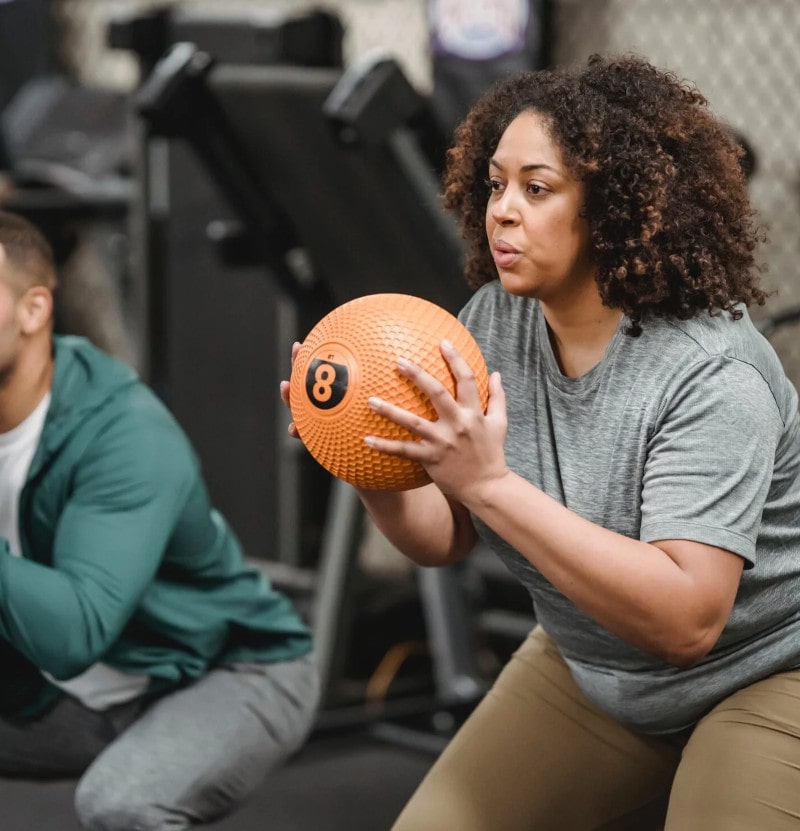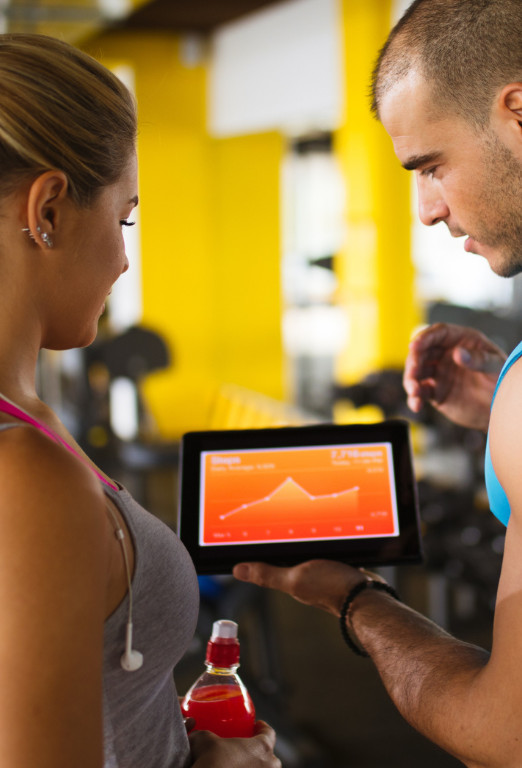
Emerging Trends In The Health And Fitness Industry
Fitness is no longer just about sweat and squats; it's evolving rapidly from heavy lifting to virtual yoga and fitness apps that serve as personal cheerleaders. As we look to the future, expect AI trainers and immersive workout trends.
Fitness has continually transformed from ancient Greeks and Romans training for survival to the aerobics craze of the 1980s and the boutique studios of the 2010s. The industry is set to grow nearly 7.5% annually through 2030, with gyms, health clubs, trackers, and wearables leading the charge. The pandemic reshaped habits, driving a surge in home workouts, online fitness platforms, and mental well-being apps. Despite a revenue dip in 2020, the global fitness market is projected to hit $434.74 billion by 2028, with significant growth in fitness trackers and digital fitness.
Here are some of the key trends shaping the future of fitness:

Wearable Tech
Wearable technology remains at the forefront, with devices like smartwatches and fitness trackers offering real-time data on activity levels, heart rate, and sleep quality.
These devices, including the Apple Watch, Garmin Forerunner, and Whoop, allow users to monitor their health and make informed decisions about their fitness routines. For instance, the Apple Watch tracks heart rate, ECG, and blood oxygen levels and supports various exercises.
Garmin Forerunner provides detailed running metrics and monitors sleep patterns, while Whoop focuses on recovery by monitoring sleep, strain, and recovery metrics.
Biohacking For Performance
Biohacking is gaining momentum as individuals leverage scientific advancements to optimize physical and mental performance.
Popular methods include intermittent fasting, cognitive enhancers (nootropics), and implantable devices that track health indicators.

Work Out From Home
The convenience of at-home exercise has led to an expansion of home gym setups.
From simple resistance bands to advanced systems and interactive platforms offering live or on-demand classes, home gyms are becoming a staple for fitness enthusiasts.

More Fitness Apps
Fitness apps provide customized workout plans, progress tracking, and virtual coaching, making fitness accessible for everyone. Apps like FitXpress offer advanced body scanning technology, providing detailed body measurements and personalized insights, catering to various fitness levels and goals.

Functional Fitness To Rise
Functional fitness is becoming more popular. It focuses on movements that simulate daily activities to build strength and mobility.
For those seeking well-rounded exercise routines, it offers a sustainable alternative to high-intensity interval training (HIIT).


Include Mental Fitness
The link between mental and physical health is increasingly recognized. Modern fitness programs are broadening to include mental and emotional health, integrating practices like meditation, mindfulness, and stress relief into traditional exercise regimens, acknowledging the importance of mental wellness. This integration highlights the importance of mental well-being in overall fitness.
Flexibility of Hybrid Fitness Models
Hybrid fitness models combine in-person and digital experiences, allowing individuals to switch between physical gym sessions and virtual classes from home. This approach offers greater flexibility and convenience.

Recover Better
Recovery has become a key focus, with tools like foam rollers, massage guns, and compression garments becoming mainstream. These products help alleviate muscle soreness, improve circulation, and prevent injury.

Fitness For All
As the population ages, the demand for fitness programs tailored to older adults is rising. These programs emphasize strength, mobility, and overall wellness, helping older adults maintain an active lifestyle.
Eco-Conscious Solutions
There is growing interest in sustainable fitness practices, reflected in the use of energy-efficient gym machines, workout gear made from recycled materials, and fitness centers adopting green strategies.

On-Demand Services
Digital fitness platforms offer workout routines, personalized plans, and virtual trainers at users' convenience. These platforms cater to various fitness levels and schedules, allowing users to engage in fitness sessions anytime, anywhere.

Workplace Fitness
Businesses are promoting physical activity at work by installing on-site fitness centers, encouraging exercise breaks, and offering incentives for staying active. These initiatives aim to enhance productivity, reduce stress, and foster a healthier work environment.
Back To Nature
Shinrin-yoku (forest bathing) and blue mind therapy are gaining recognition for their calming effects and ability to improve mental health. These practices involve spending mindful time in natural settings to reduce stress and enhance relaxation.

AI-Driven Personalization
AI and machine learning are transforming the fitness industry, offering customized, data-driven solutions that adapt to individual needs. AI-driven fitness solutions provide real-time adjustments and smarter recommendations, enhancing the overall workout experience.


The surge in health and fitness popularity has influenced the luxury vacation industry, particularly in wellness luxury yacht charters. These charters offer an exclusive, health-oriented escape where you can disconnect, recharge, and rejuvenate in luxurious, private environments. Many yachts feature facilities dedicated to wellness and exercise, and are staffed by crew members who are personal trainers, yoga instructors, and nutritionists. The yacht’s chef can also cater to dietary requirements.
Fitness and a love for the sea can work well together, with yachting offering the opportunity to explore breathtaking destinations while embracing fitness on-board.
Source , MARK ADRIANE on Unsplash